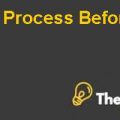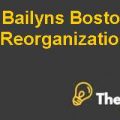
In 2012, Fast Ion Battery confronted with a shortage of money and found difficulties in meeting her objectives, which also shook the confidence of many cleantech investors. As this battery company needed a round of financing of around $5 million, but due to the present circumstances of the company one of its three investors denied for this funding. A partner at Ware Street Capital (WSC), John Davidson, also a board member of Fast Ion Battery with leading investment, wonders that whether it would be better to put the company on track by funding this round. Don Lerner at Bluelock Ventures refused to participate in the $5 million bridge round whose call come at a worse time. The company due to the intense shortage, quickly required this funding in order to survive and develop its revolutionary battery. It was a serious dilemma for Davidson.
However, Fast Ion was achieving traction with creating its technology and the need for the new CEO had brought two potential candidates who had the professional expertise to move ahead the struggling company with an effective business framework. Simultaneously, Fast Ion did not generate the desired results for the investment of $10 million of Ware Street Capital and the two other investors. Is it possible that they finance this $5 million bridge round as well? Would the other investors provide their support for an exit event in the presence of rapidly changing clean tech investment climate? All these questions became more challenging, after the Lerner’s call for the refusal of bridge financing in Fast Ion.












